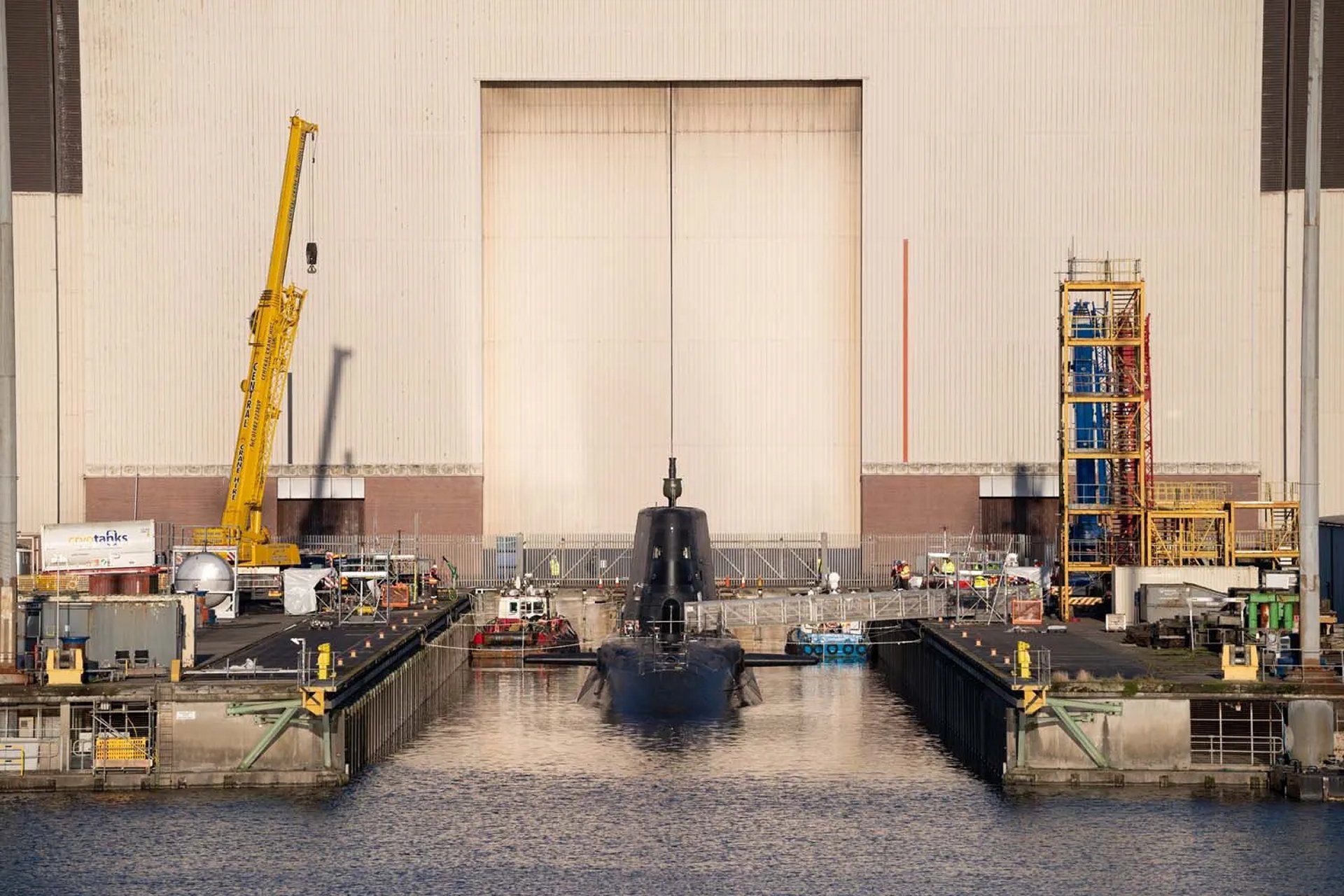Breaking News
HMS Agamemnon: newest Astute-class submarine launched by Royal Navy.
According to information published by the UK MoD on October 3, 2024, the Royal Navy's newest hunter-killer submarine, HMS Agamemnon, has officially taken to the water following her launch at BAE Systems' shipyard in Barrow-in-Furness.
Follow Army Recognition on Google News at this link

Royal Navy's Astute-class submarine Agamemnon. (Picture source: British MoD)
The 7,400-tonne vessel, nicknamed "Awesome Aggie," is the sixth of seven Astute-class submarines being constructed for the UK’s Silent Service. Named after the legendary Greek king who led the siege of Troy, HMS Agamemnon is designed to operate at the forefront of the Royal Navy’s operations well into the latter half of the 21st century.
Equipped with Tomahawk cruise missiles and advanced intelligence capabilities, she will play a critical role in protecting the UK’s nuclear deterrent and carrier strike groups from hostile threats while also being able to carry out precision strikes on land when necessary.
The launch, which coincides with the 123rd anniversary of the nation’s first submarine being completed at the same Barrow shipyard, is a significant milestone for all involved in the Astute programme.
With construction still underway on the seventh and final Astute-class submarine, HMS Agincourt, and the first of the next-generation nuclear deterrent submarines, HMS Dreadnought, the Barrow facility remains a hub of vital naval engineering. HMS Agamemnon enters the final phases of testing and commissioning.
Royal Navy
The Royal Navy is currently facing a multitude of challenges, driven by both external threats and internal limitations. One of the most pressing issues is the aging fleet, compounded by difficulties in introducing new vessels and technologies quickly enough. Although progress is being made with the construction of new ships like the Type 31 frigates and the Dreadnought-class submarines, these projects face significant delays and logistical bottlenecks. As a result, older ships must remain in service longer than anticipated, which increases maintenance costs and risks operational readiness.
Another critical challenge is funding. While the UK government has committed to expanding the fleet, a significant budgetary shortfall remains. For example, many programs, including the development of new frigates and support ships, are still unfunded. This creates a scenario where the Navy must carefully balance immediate needs with long-term investments, often leading to compromises that prioritize cheaper options over operationally optimal solutions.
The Navy also faces substantial workforce challenges. Recruitment and retention of skilled personnel have become increasingly difficult, particularly in technical fields. This problem is exacerbated by the push towards lean crewing and automation, which, while improving efficiency, also introduces cyber vulnerabilities and places additional strain on the workforce.


























